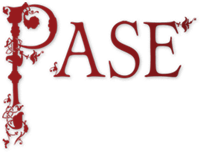Table of Contents
Top of page
Name
Summary
Distribution Map
Property List
Profile
Bibliography
Bottom of page
Merefin 2
Merefin ‘of Foxley’ (Northants)
Male
CPL
4 of 5
Name
Summary
Merefin 2 had a single holding of 48 acres worth 5s. in south Northamptonshire, but he may well have been a hundred-reeve and the father of the Ælfwine son of Merefin who is addressed in a pre-Conquest writ in connection with the king’s estates in Rutland.Distribution map of property and lordships associated with this name in DB
List of property and lordships associated with this name in DB
Holder 1066
| Shire | Phil. ref. | Vill | DB Spelling | Holder 1066 | Lord 1066 | Tenant-in-Chief 1086 | 1086 Subtenant | Fiscal Value | 1066 Value | 1086 Value | Conf. | Show on Map |
|---|---|---|---|---|---|---|---|---|---|---|---|---|
| Northamptonshire | 18,39 | Foxley | Merefin | Merefin 'of Foxley' | - | Robert, count of Mortain | Ralph 'the man of Robert, count of Mortain (in the East Midlands)' | 0.40 | 0.25 | 0.25 | A | Map |
| Totals | ||||||||||||
Profile
The name Merefin occurs only once in DB, as holder TRE of an estate of ‘4 parts of ½ hide’ (48 geld acres) at Foxley in south Northamptonshire. A strong case has been made elsewhere for the identity of this Merefin with the father of the Ælfwine son of Merefin (ælfwine Merefinnes sunu) who is addressed in a writ of Edward the Confessor in the Westminster archive (S 1138; Harmer 1952: no. 94). The writ declares that Edward has given Roteland (part of the later county of Rutland) to his wife Queen Eadgyth for life, and then to Westminster abbey. In form it is a twelfth-century forgery, but in substance has been regarded authoritatively as a ‘slightly modernised’ version of an authentic document. It is addressed to Bishop Wulfwig, Northmann the sheriff, Ælfwine son of Merefin, and all the thegns of Northamptonshire. Ælfwine must surely have been addressed because he was an official concerned with the administration of royal estates in Roteland. It has also been plausibly suggested that he was the same man as the Alwine who had three manors ‘of the queen’s fief’ (de feudo reginae) in Leicestershire TRE (Cain 1987: 33–5; Cain 1990: 18).The extreme rarity of the name Merefin strongly suggests that Ælfwine’s father was identical with the TRE holder of Foxley, even though Foxley is at the other end of Northamptonshire from Roteland. The connection is strengthened by the peculiar status of Merefin’s vill of Foxley in DB and later times. The place gave its name to a Domesday hundred but was not itself within that hundred in 1086, instead being assigned to Towcester (Anderson 1934: 125–6). Twelfth-century and later sources show that in fact the vill of Foxley (only 483 acres in the early nineteenth century) divided between three parishes and three hundreds (Bridges 1791: I, 234–5; Baker 1822–41: II, 1, 30–1). This could be taken as evidence that Foxley was once the central place of a larger territory afterwards divided into three hundreds (one of them, Greens Norton, being Foxley hundred under a new name) in a way that excluded the vill from the residual hundred still named after it. There was nothing much to Foxley in the late eleventh century beyond whatever administrative functions were still located there, but Merefin’s tenure of it, taken together with the probable identity of his son as a king’s reeve, recommends the idea that Merefin was himself a royal official of some kind, perhaps the hundred-reeve in charge of the three hundreds which had once been (and still were?) administered from Foxley.
Bibliography
Anderson 1934: Olof S. Anderson, The English Hundred-Names: The Northern and Midland Counties, Lund Universitets Årsskrift N.F. Avd. 1 (Lund, 1934)
Baker 1822–41: George Baker, The History and Antiquities of the County of Northampton, 2 vols [all published] (London: John Bowyer Nichols and Son, 1822–41)
Cain 1987: Tom Cain, ‘An introduction to the Rutland Domesday’, The Northamptonshire and Rutland Domesday, ed. Ann Williams and R. W. H. Erskine (London: Alecto Historical Editions, 1987), 18–34
Cain 1990: T. D. Cain, ‘An introduction to the Leicestershire Domesday’, The Leicestershire Domesday, [ed. Ann Williams and R. W. H. Erskine] (London: Alecto Historical Editions, 1990), 1–21
Harmer 1952: F. E. Harmer, Anglo-Saxon Writs (Manchester: Manchester University Press, 1952)
S: P. H. Sawyer, Anglo-Saxon Charters: An Annotated List and Bibliography, Royal Historical Society Guides and Handbooks 8 (London, 1968), revised by S. Kelly, R. Rushforth et al., The Electronic Sawyer: Online Catalogue of Anglo-Saxon Charters, published online through Kemble: The Anglo-Saxon Charters Website, currently at http://www.esawyer.org.uk/about/index.html
Whalley 1791: Peter Whalley, The History and Antiquities of Northamptonshire, compiled from the manuscript collections of the late learned antiquary John Bridges, esq., 2 vols (Oxford, 1791)
